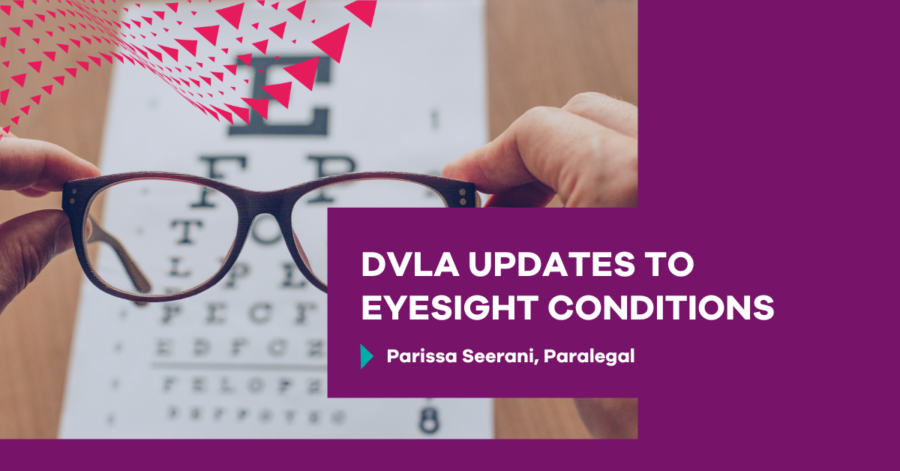
The DVLA is continually making updates to ensure that the UK’s roads are safe, and there is some updated guidance coming soon from the DVLA which requires those with certain visual impairments to report them to the driving authority.
We know that there are certain physical requirements all road users must meet, including of course standards of vision.
Since 1st September 2001, every road user must be able to read, with or without glasses or contact lenses, a car number plate from 20 metres away. Road users must also meet the minimum eyesight standard for driving by a visual acuity of at least decimal 0.5 measured on the Snellen scale, with glasses or contact lenses if necessary. Your field of vision must also be adequate.
Lorry and bus drivers must have a visual acuity of at least 0.8 measured on the Snellen scale in the best eye, and at least 0.1 in the other eye.
What is the Snellen test?
The Snellen test is when your visual acuity is measured using the Snellen scale – a chart that uses several rows of letters which get smaller as you read down the chart. An ophthalmologist assesses both your visual acuity and field vision to decide whether and at what level you are visually impaired.
What are the current driving eyesight rules?
You do not need to inform the DVLA if your eye condition includes being short or long sighted or colour blind. There is also no need to inform the DVLA if you have had surgery to correct short sightedness and can meet the eyesight standards.
But if you have certain visual impairments, you will have to declare these to the DVLA.
What are the DVLA changes?
Following serious concerns raised by the Association of Optometrists (AOP), regarding the list of visual conditions being so extensive that it could apply to almost every driver who receives an eye test, they contacted the DVLA to request a review of the guidance for a road user’s sight requirements. The DVLA agreed to remove the list they had and have welcomed the opportunity to work with the AOP to revise the guidance.
What current visual impairments are listed to be reported to the DVLA?
As listed on www.gov.uk, you must disclose if you have the following eye conditions:
- blepharospasm
- diabetic retinopathy (with laser treatment)
- diplopia (double vision)
- glaucoma
- nyctalopia (night blindness)
- retinitis pigmentosa
If the condition only affects one eye and you have sight in both eyes, you only have to tell the DVLA if you have been advised of the following:
- you do not meet the visual standards for driving
- you may not meet the visual standards for driving
In October 2022 the DVLA introduced a change that if a vision impairment is contributory to an accident, the driver with the vision impairment will be issued a £1,000 fine along with three points endorsed on their driving licence if the DVLA was not notified of the visual impairment prior to the accident. This looks set to be changed again in the forthcoming updates.
If you have a visual impairment, you can report this condition online at Gov.UK.



